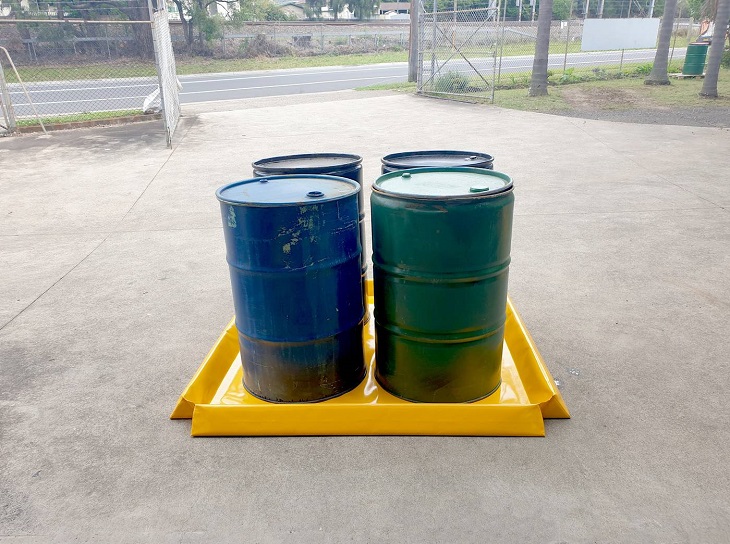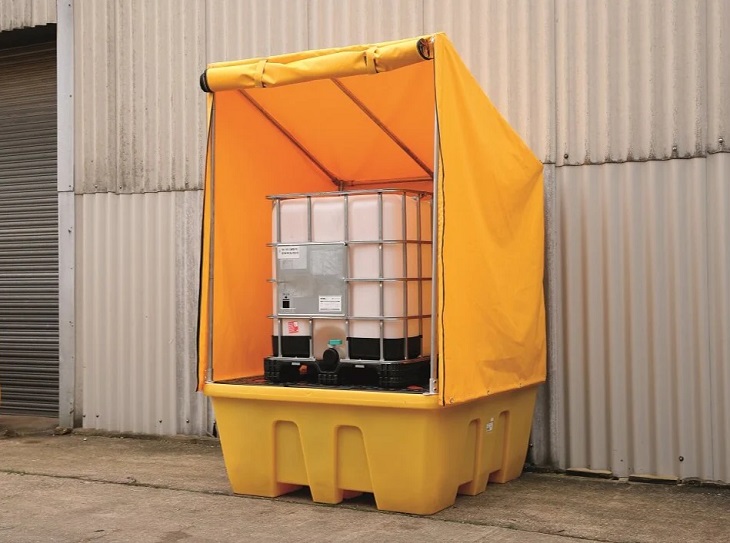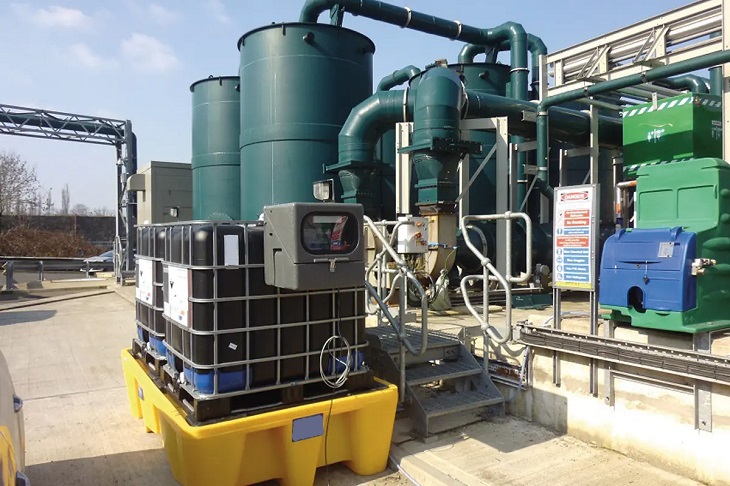Thousands of Australian companies are directly involved in the production, processing, distribution and storage of hazardous chemicals. All must abide by SafeWork regulations set out by state and federal governments to keep employees safe, prevent the risk of leaks and spills, minimise the risk of workplace incidents and accidents, and the potential environmental impact the materials can have.
Government sites go into extensive detail on what constitutes hazardous materials, how they are classified, and how they are stored. This includes recommendations when using containers of different sizes, as well as different storage and handling systems, specifically during transportation. Employees, supervising individuals and companies all risk fines in the thousands if found wanting in the provision of appropriate spill containment equipment, and when non-compliance results in property and environmental damage.
What is Chemical Bunding?

Safely handling and storing toxic, flammable and hazardous materials is done with a variety of chemical bunds. These are containers, trays or barriers that help employees and companies efficiently manage the risk of potential spills. Common types include drum bunds, IBC bunds, storage cabinets and shelves and floor or drive-over bunding. Bunding is sold in varying capacities and sizes, is made of a variety of materials to suit the stored chemicals, and meets specific Australian Standards set out for each industry.
Why it is Used
Spill bunding is used to prevent a variety of serious issues in the workplace when spills or leaks do happen. This includes fires and explosions from flammable liquids, damage to tools, vehicles, equipment and property from corrosive substances, health hazards when employees come into contact with or inhale hazardous or toxic substances, pollution when chemicals enter drainage systems, and contamination of soils and vegetation from spills that haven’t been contained.
Despite the grave consequences these occurrences can have, not using bunding or appropriate bunding solutions, will additionally lead to lost production, increased spill containment costs, and fines or legal action that can significantly damage or cripple a business.
Types of Bunding

Bunding largely depends on how materials are stored and their quantities. The most common types include:
- Drum bunds or bunded pallets – these are used to safely store oil and chemical drums. They come in 2 or 4 drum configurations and for standard drums of up to 205 litres. Useful features are forklift tine pockets for transportation and stacking to save space.
- IBC bunds – intermediate bulk containers (IBCs) store chemicals in larger quantities of up to 1000 litres, and the bunds are sized to match. The bunds can house a single IBC, or twin containers, or come as containment solutions that house both IBCs and drums as a more versatile option.
- Floor bunding – this is often implemented as a barrier or containment area in enclosed spaces, preventing leaks from reaching outdoors. Floor bunding prevents spills for machinery, vehicles, drums and containers and can be used as a permanent or temporary solution in high-risk areas. A popular type is drive-over bunding.
- Bunded shelving and cabinets – bunding also works for smaller containers usually stored on shelves or in cabinets. Each storage bay can be equipped with spill trays that can contain up to 90 litres.
Materials in Bunding
These spill containment solutions can be had in different materials. Polyethylene pallets are used to contain organic peroxides, corrosive liquids, toxic chemicals and oxidising agents, These cover most uses. Heavy-duty bunding is made either of aluminium, as seen in some types of floor bunding, or steel, which is commonly used to store flammable and combustible liquids, particularly with oil drums and IBCs. Look for zinc-plated or galvanised steel chemical bunding to ensure it lasts.
Regulations Regarding Use
Regulations and standards as to which type of bunding to use differ, and are dependent on the chemical. For flammable and combustible liquids ensure bunds comply with the AS 1940: 2017 standard, for flammable solids AS/NZS 5026, for corrosives AS 3780, for toxic substances AS/NZS 4452, oxidising agents and peroxides AS4326 and AS 2714 respectively and miscellaneous dangerous goods must comply with the AS/NZS 4681 standard.
Choosing the Right Bunding Solutions

There are several other factors to consider when choosing chemical bunds. Size and sump capacity are possibly the main considerations when purchasing bunding that suits what you use in the workplace. As a rule, the bunding should be able to hold 110% of the biggest container and 25% of the total stored, or whichever is larger. This ensures that no liquids are spilt into surrounding areas. Not complying with these guidelines can infer hefty (5-figure) fines. Of course, cleanup procedures also require using the appropriate spill kits and PPE gear. Consider the type and quantity of chemicals your business uses and get bunding in the right sizes.
Drainage is another consideration. Those that are stored outdoors need to have some way of removing rainwater. as this can significantly reduce holding capacity.
Compliance also means using bunds in materials appropriate to the chemicals. Plastics, for instance, work well with most corrosives, but steel bunds won’t. Conversely, flammable liquids are better stored with steel bunds for obvious reasons.
Lastly, if you still have queries, consult a bunding specialist to ensure what you’re buying is compatible with your business and complies with current legal requirements for your industry.


















